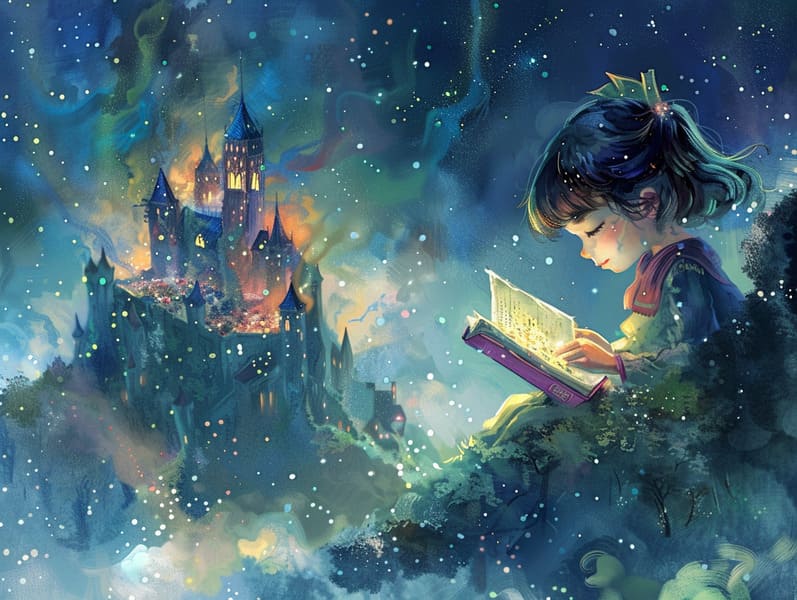Tracing the Heritage of Vintage Fairy Tales with Its Perpetual Charm.
Tracing the Heritage of Vintage Fairy Tales with Its Perpetual Charm.
Blog Article

Children's fairy tales have old origins. These stories have been shared from one generation to the next ages before they were ever transcribed. They emerged from a variety of societies, including American traditions. They were initially told among grown-ups, often carrying themes and messages related to the societal norms and beliefs of the time.
The renowned Brothers Grimm, Jacob and Wilhelm Grimm, were among the first to collect and release many of these beloved stories. Their published works, "Grimm's Story Collection," included stories like "The Story of Cinderella," "The Story of Hansel and Gretel," and "Snow White," which have since become hallmarks in the world of famous fairy tales. Similarly, Hans Christian Andersen's imaginative tales, such as "The Mermaid," and "The Duckling's Story," have stolen hearts worldwide, establishing their place in the pantheon of timeless fairy tales.
Despite being ancient, these stories remain as impactful as ever, especially as kids' bedtime tales. These fantastical tales are now available in numerous formats, including colorful picture books, magical animations, and online fairy tales.
Their lasting presence can be connected to several charming aspects:
Life Lessons: Classic fairy tales often offer important moral lessons. Fairy tales like "The Shepherd Boy and the Wolf" teach the merit of sincerity, while "The Race of the Tortoise and the Hare" point out the qualities of tenacity and humility. These narratives offer the young clear distinctions between right and wrong, molding their moral compass in a soft yet significant way.
Kindness and Comprehension: Ancient fairy tales frequently involve protagonists facing struggles and tests, inspiring readers to empathize with their struggles and root for their triumphs. For instance, "Beauty's Beast" conveys the virtue of looking beyond appearances to perceive the true being of a character, building awareness and understanding.
Cultural Recognition: Many classic fairy tales are steeped in the cultural contexts from which they emerged. Learning from these narratives can provide illuminating insights into different cultures, cultivating a sense of cultural appreciation and discernment.
Inventiveness and Fantasy: The fantastical elements in classic fairy tales—magical kingdoms—enhance children’s dreams. These narratives move readers to supernatural realms, engendering fantasy-filled thoughts and a sense of wonder that stays a lifetime.
Classic fairy tales are not only alluring but also informative. They function as whimsical tools in promoting various thinking and feeling skills in little ones. When traditional fairy tales are recited, they promote verbal skills by presenting new vocabulary and complicated sentence structures. This practice also fosters listening abilities and mindfulness, as young ones concentrate deeply, anticipating to see what happens next.
Furthermore, deliberating the themes and characters of classic fairy tales can improve critical thinking and intellectual skills. The young are taught to discover patterns, predict happenings, and comprehend cause and effect. These examinations also boost young ones say their thoughts and feelings, adding to their emotional intelligence.
In today’s electronic age, the proliferation of digital storybooks has made these fairy tales more obtainable than ever. Web-based platforms and software present comprehensive collections of classic fairy tales that can be experienced or listened via anytime, anywhere. Fairy tales voiced are particularly common, presenting an fascinating method for the young to engage with these entrancing tales. Read-aloud books and read-to-me stories move characters and settings to life, often supported by fantastical soundtracks and tunes that amplify the narrative adventure.
The timeless charm of timeless fairy tales lies in their ability to adapt to today's world while staying true to their basic principles. Contemporary renditions of these tales often present more multicultural figures and modern settings, making them pertinent to today’s audience. However, the main ideas of boldness, generosity, and equity remain unchanged, continuing to touch audiences of all ages.
Fairy tales also offer a sense of serenity and recognition. They confer upon a well-structured narrative with a transparent beginning, middle, and end, often wrapping up with the culmination of conflicts and the triumph of honesty over deceit. This reliability can be encouraging for children, sharing a sense of consistency in an inconstant world.
Traditional fairy tales continue to captivate and inform new generations, maintaining their radiance and relevance in modern society. As kids' bedtime tales, they deliver a perfect blend of captivation and here insight, fostering moral values, empathy, and creativity. The proliferation of internet fairy tales and the prevalence of fairy tales voiced confirm that these old stories remain available to new generations.
By protecting and divulging these tales, we continue to celebrate the rich tapestry of human imagination and cultural heritage. Whether you are viewing a gorgeously illustrated book, perusing a online collection, or listening on an sound book, the wonder of traditional fairy tales is always within reach. These narratives point out of the invariable impact of tales and its ability to link us across epochs and places.
Whether you are reading a gorgeously illustrated book, enjoying a web collection, or listening through an read-aloud book, the loveliness of classic fairy tales is always within reach.
These tales teach us of the steadfast presence of fairy tales and its ability to link us across eras and regions, weaving a spell that charms and informs alike.